The “Life Force”
Luigi Galvani (1737–1798)
- 1791: Static electricity causes a frog leg to twitch.
- Twitching also induced by metals.
- Metals thought to conduct the animal's "life force".
Skeptical Interrogation
Alessandro Volta (1745–1827)
Galvani’s "life force" claim questioned.
- Experiments showed metals were the source of electricity, conducted by frog tissue.
- Debunked idea that electricity is only in living things.
Volta Pile
- The first battery, invented by Volta.
- Each layer produced about 0.7 volts of electricity.
- Used alternating discs of zinc and copper separated by cardboard soaked in saltwater.
- Napoleon was so impressed he made Volta a count in 1801.
Electric Batteries
- Batteries convert chemical energy into electrical energy.
- Provide a constant voltage (EMF) to a circuit.
- Parts: Anode (−), Cathode (+), Electrolyte.
- Key Point: Batteries "push" electrons through the circuit.
Current Diagram Symbols
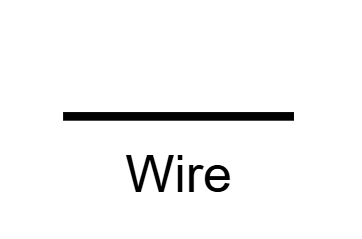
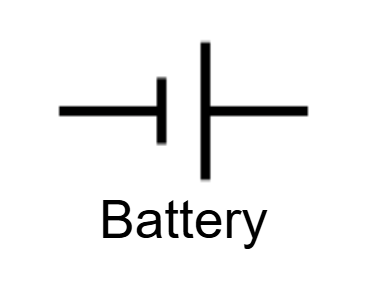

- The longer line indicates the positive terminal; shorter indicates negative
- Open switches prevent electrical energy flow; closed switches permit it

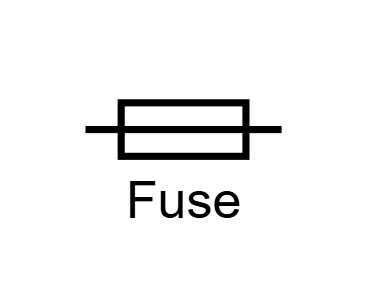
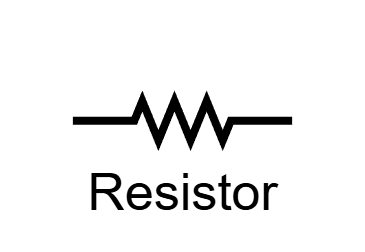
- Capacitors work as batteries except release charge instantly and must be charged again
- Fuses are designed as deliberate fault points to prevent permanent system damage
- Resistors can be anything that consume energy; almost always loss as heat
Circuit Diagram Norms
- Use standardized symbols (battery, resistor, capacitor etc.)
- Draw straight lines with 90° angles for wires
- Avoid wire crossings where possible; use dots for connections
- Label components with values (V,
- Show conventional current flow (+ to -)
- Keep diagrams simple and uncluttered
- Represent resistors and consumers with appropriate symbols:
- Resistors: zigzag lines for pure resistance
- Consumers (lamps, motors): specific symbols showing energy conversion
Electric Current Analogy
- Charge flow in a conductor is like water in a pipe.
- Charge flows from high to low potential
- Charge spreads to share all paths
- Flow depends on paths available
Electricity and Magnetism
André-Marie Ampère (1775-1836)
- Discovered relationship between electricity and magnetism
- Ampere (A): Unit of electric current
Electric Current

- Electric current (I) is the flow of electric charge.
- Not the flow of electrons!
- Measured in amperes (A).
Visualizing the flow of charge

- Conventional current: Direction positive charges would flow (from + to −).
-
- Charge is said to flow from the positive to the negative terminal through the circuit
-
- Electrons would be visualized moving from the negative toward the positive terminal against the current
-
- Electrons move very slowly (drift velocity ~1mm/s)
Misconceptions about Electric Current
- Energy transfer in circuits is near light speed (despite drift velocity)
- Like dominoes: push one end, other end falls instantly
- Electrons bump into each other, transferring energy
- Like pushing water in a full pipe: instant flow at other end
Ohm’s Law
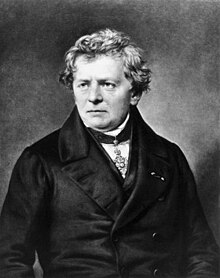
Georg Simon Ohm (1789-1854)
- Discovered the relationship between voltage, current, and resistance.
- Ohm's Law: The current through a conductor is directly proportional to the voltage across it, provided temperature remains constant.
- The Ohm (Greek Omega,
Simple Ohm's Law Units Example
Example: If
(Complex) Cancellation to SI Base Units
-
For resistance (
-
-
Therefore,
Resistivity
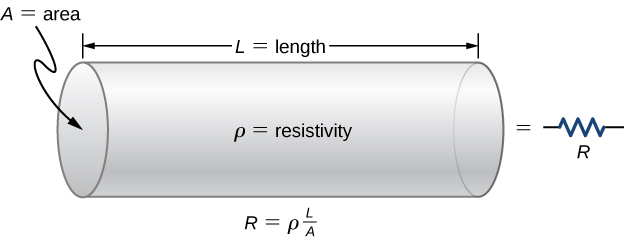
- Resistance depends on material, length, and area.
-
The resistivity of a section of circuit is given as:
Where
Practical Resistivity
| Material | Resistivity ( |
|---|---|
| Wood (dry) | |
| Rubber | |
| Glass | |
| Human Skin (dry) | |
| Salt Water | |
| Iron | |
| Aluminum | |
| Copper |
Table 1 Resistivity of common materials.
- One way to think of resistivity is how much energy will be lost as heat as the charge flows through it.
- a) Copper conducts the electricity.
- b) Wood catches fire.
- c) Biological tissues experience burns
Resistance and Resistors
- Resistance: How much a material opposes current flow.
- Resistors: Components designed to introduce resistance.
- Application: convert electrical into thermal energy

Ohm’s Law in Circuits
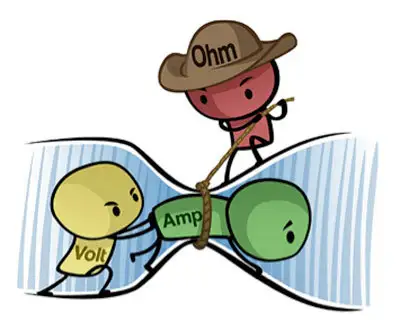
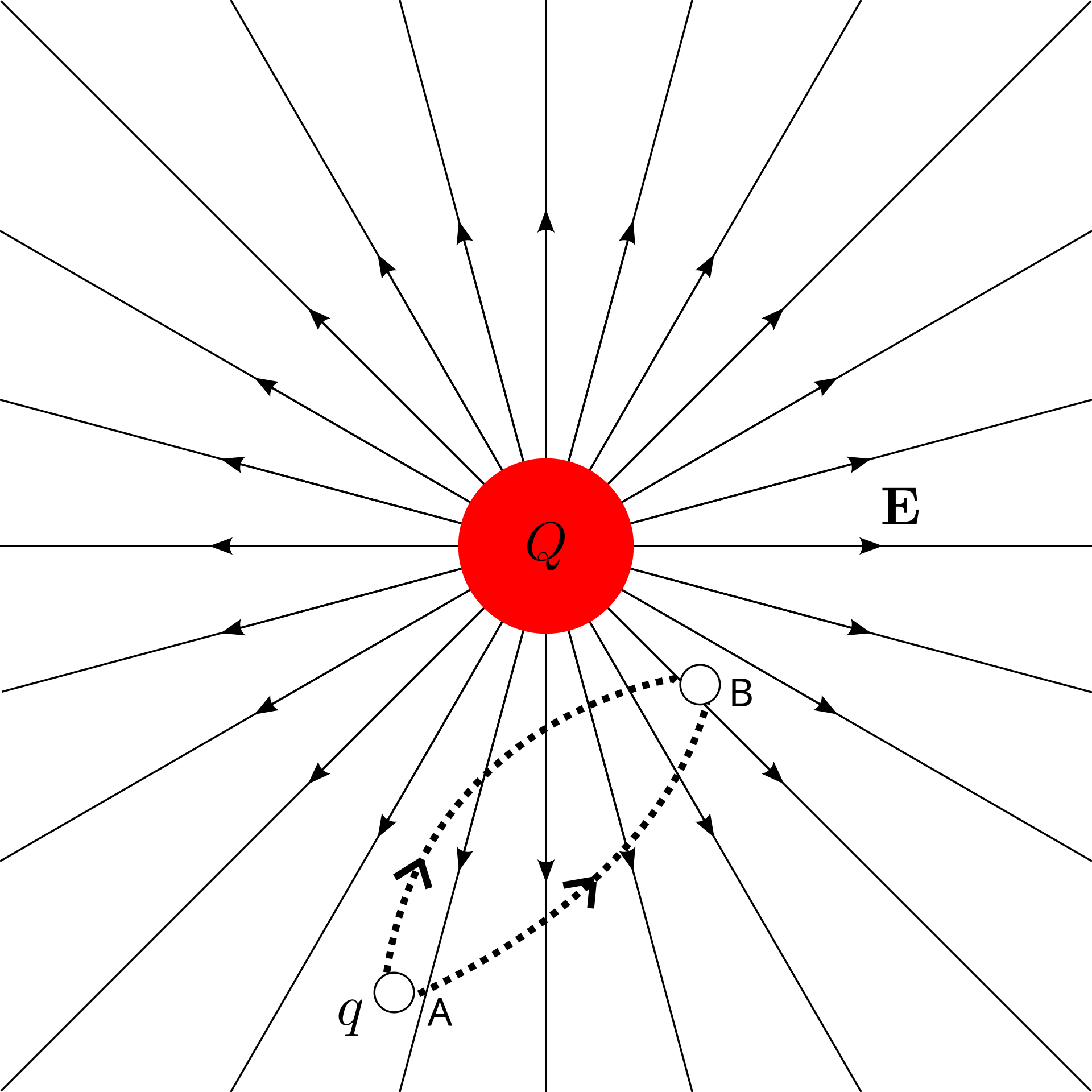
- When current flows through a resistor, a voltage drop is experienced.
- Force on the charge is no longer balanced because one path is energetically "easier" to follow
- Visualize resistance as a narrow pipe or thumb over a hose.
The voltage drop can be calculated using Ohm's Law:
EMF and Terminal Voltage
- EMF (Electromotive Force): The ideal voltage a battery provides.
- Terminal Voltage: Actual voltage across battery terminals (can be less than EMF due to internal resistance).
Where
Series vs Parallel Circuits
| - All resistors are aligned in a single circuit - The same current exists throughout - Voltage divides across components - Higher total resistance |
 |
| - Multiple paths for current - Current divides between paths - The same voltage across branches - Lower total resistance |
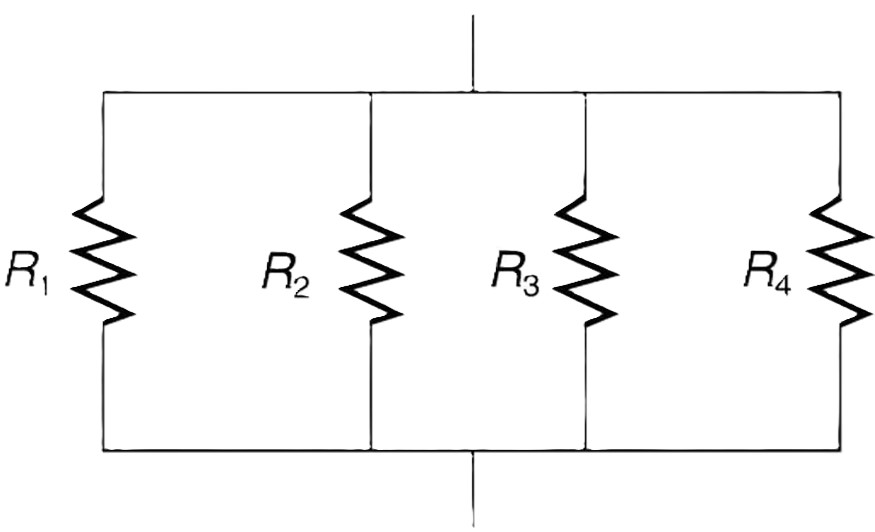 |
Series vs Parallel Applications
Series Circuits
- Christmas lights (old style)
- Battery-powered devices
- Voltage dividers
- If one breaks, all stop
Parallel Circuits
- Home wiring
- Modern Christmas lights
- Multiple device outlets
- If one breaks, others work
Resistors in Series
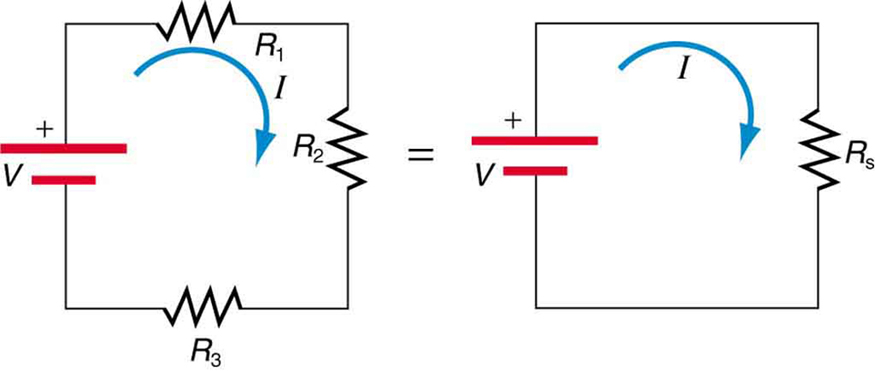
Resistance in Series Circuits
Total resistance:
Resistors in Parallel

- Solving resistors in parallel requires taking the reciprocal of the sum of the reciprocals.
Resistance in Parallel Circuits
Total resistance:
- This is because the current can take multiple paths, and the total current is the sum of the currents through each path.
- When solving, remember to take the reciprocal of the final answer to find the equivalent resistance.
- Adding the fractions requires a common denominator.
Electrical Power
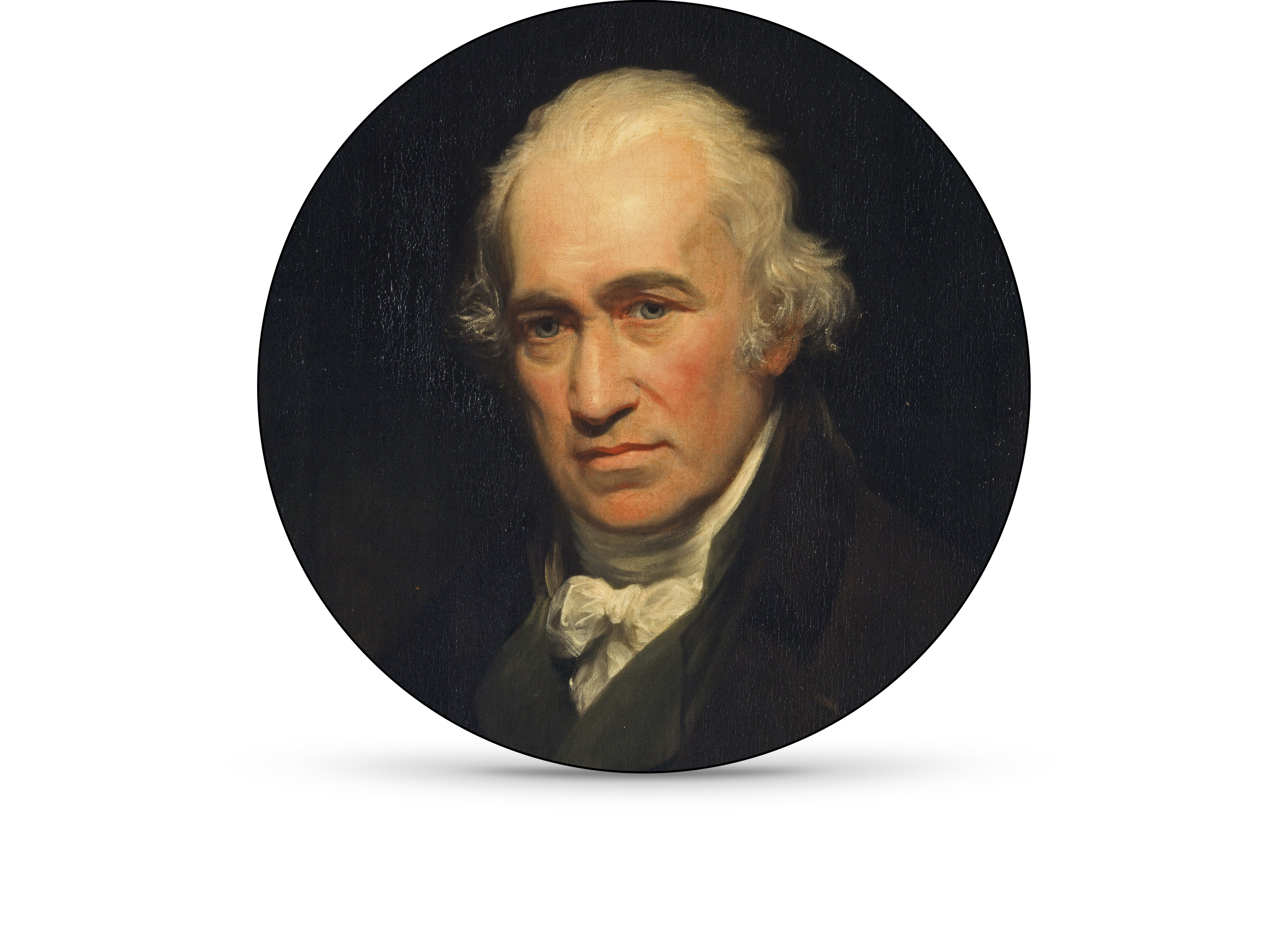
- Power (P) is the rate at which energy is transferred
- In circuits, power is energy per unit time
- Measured in watts (W):
Power and Work
Energy Connection
- Work done by electric force:
- Work from charge and voltage:
- Power from work over time:
- Current as charge over time:
- Substituting current:
Therefore:
Converting Units to Energy and Power
- Power (watts) is a measure of energy per second
- 1 watt = 1 joule per second
-
-
A 100W device uses 100 joules of energy each second
-
Total energy = power × time (joules = watts × seconds)
Three equivalent formulae for electrical power:
Common Electrical Power Requirements
| Device | Voltage (V) | Power (W) | Notes |
|---|---|---|---|
| iPhone Charger | 5 | 20 | USB-C Power Delivery |
| MacBook Pro | 20 | 140 | Via USB-C/MagSafe |
| Refrigerator | 120 | 150 | Energy-efficient model |
| Gaming PC | 120 | 750 | Under full load |
| Microwave | 120 | 1,000 | Standard household unit |
| Electric Kettle | 120 | 1,500 | Boils water in ~4 minutes |
| Air Conditioner | 240 | 3,500 | Central home unit |
| Tesla Model 3 | 400 | 250,000 | Peak power during acceleration |
| Boeing 787 | 115 | 1,000,000 | Main electrical system |
Problem 1: Series Circuit Analysis
A circuit contains three resistors in series:
a) What is the total resistance?
b) What is the current through each resistor?
c) What is the voltage drop across each resistor?
-
a) Approach: For resistors in series, add individual resistances.
-
b) Approach: With total resistance known, apply Ohm's law to find current.
-
c) Approach: In series circuits, use Ohm's law to find voltage drop across each resistor.
Problem 2: Power Consumption
A circuit has a 9 V battery connected to a 3
a) What is the current in the circuit?
b) What is the power dissipated by the resistor?
c) How much energy is converted to heat in 5 minutes?
Solution:
-
a) Approach: Apply Ohm's law directly to find current.
-
b) Approach: Use power formula with known current and resistance.
-
c) Approach: Convert power to energy by multiplying by time in seconds.
Problem 3: Parallel Circuit
Two resistors are connected in parallel:
a) What is the equivalent resistance?
b) What is the total current from the battery?
c) What is the current through each resistor?
Solution:
- a) Approach: For parallel circuits, add the reciprocals of individual resistances, then take the reciprocal of that sum.
-
b) Approach: Once you have the equivalent resistance, apply Ohm's law with the total voltage to find total current.
-
c) Approach: In parallel circuits, each component receives the full voltage. Apply Ohm's law to each resistor separately.
Formula Summary
| Category | Concept | Formula | Units/Notes |
|---|---|---|---|
| Fundamentals | Current | A (Amperes) | |
| Electric Potential | V (Volts) | ||
| Ohm's Law | Basic Form | V = A × Ω | |
| Resistance Form | Ω (Ohms) | ||
| Power | Voltage-Current | W (Watts) | |
| Current-Resistance | W = A² × Ω | ||
| Voltage-Resistance | W = V² ÷ Ω | ||
| Circuit Analysis | Series Resistance | Total increases | |
| Parallel Resistance | Total decreases |
 The ampere was defined relative to the force between parallel current-carrying conductors: - Two conductors 1m apart - Each carrying 1 ampere - Experience a force of 2×10⁻⁷ N per meter ---
# Kirchhoff's Laws <div class='flexbox'> <div> 1. **Kirchhoff's Current Law (KCL)**: The total current entering a junction equals the total current leaving it. - $$\sum I_{in} = \sum I_{out}$$ - * Conservation of charge: charge cannot be created or destroyed. 2. **Kirchhoff's Voltage Law (KVL)**: The sum of the potential differences (voltage) around any closed loop in a circuit is zero. - $$\sum V = 0$$ - * Conservation of energy: energy supplied equals energy consumed. - *Voltage drop across resistors equals voltage rise across sources (batteries).** 3.
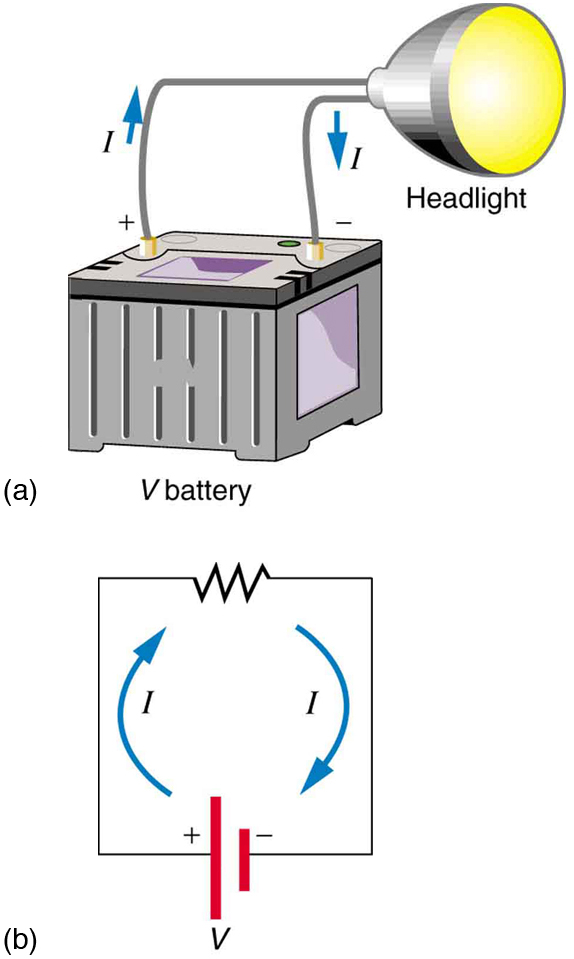
<div class='important-info'>
<div class='important-info'>
<div class='important-info'>
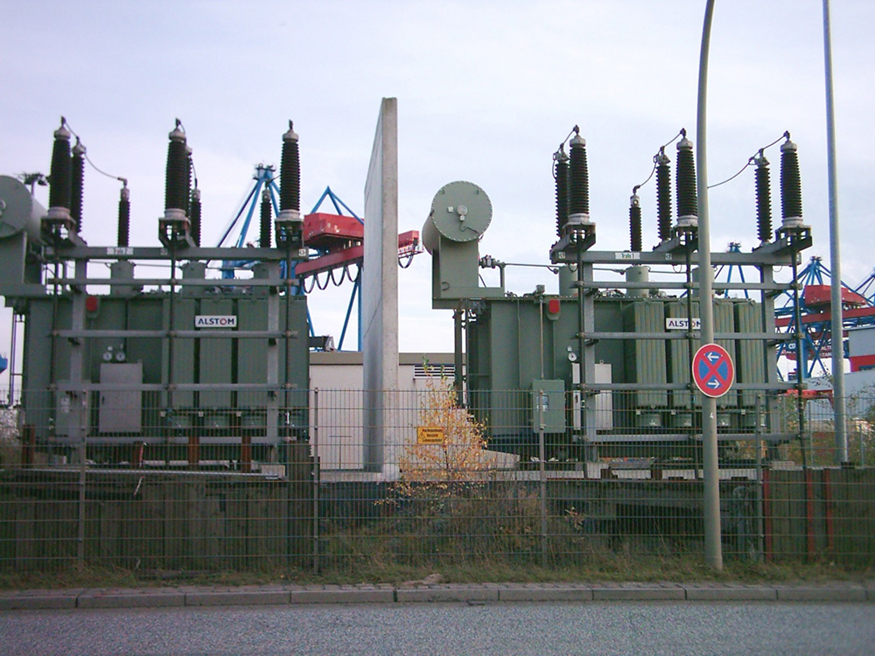
|Unit|Unit Relationships| |-|-| | Resistance (unit) | $1~\Omega = \frac{1~V}{1~A}$ | 1 Ohm = 1 Volt / 1 Ampere | | Power (unit) | $1~W = 1~V \cdot 1~A$ | 1 Watt = 1 Volt × 1 Ampere | | Power (unit) | $1~W = 1~\frac{J}{s}$ | 1 Watt = 1 Joule per second |